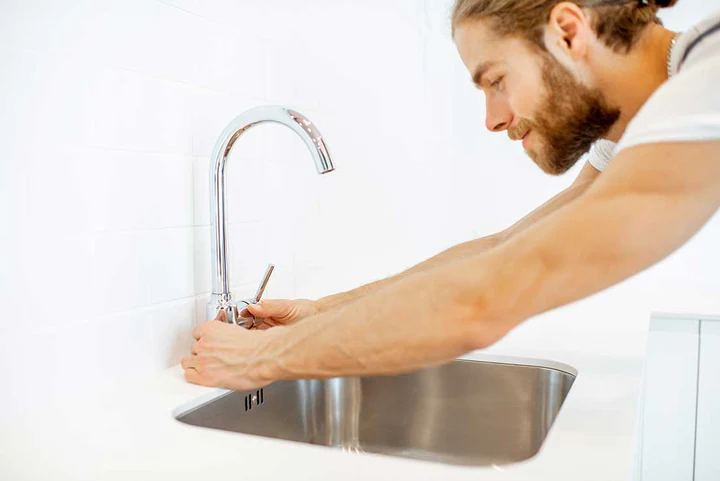An adaptive faucet is designed to make water usage more accessible and safer for people who may have difficulties using standard faucets. These difficulties could arise from physical limitations, cognitive impairments, or age-related challenges. Here are several features or types of adaptive faucets:
1. Touch-activated faucets: These faucets activate with a simple touch, eliminating the need for grasping or turning handles. This is especially helpful for individuals with limited hand strength or dexterity. View faucets on Amazon.
2. Motion-activated faucets: Also known as sensor faucets, they turn on and off based on the presence of a hand or dish beneath the spout. This hands-free operation is hygienic and reduces the spread of germs. View motion-activated faucets on Amazon.
3. Timed faucets: They run for a set period and then automatically shut off. These are commonly found in public restrooms but can be beneficial for individuals who may forget to turn off the water. View timed faucets.
4. Lever-handled faucets: Rather than traditional round knobs, these faucets have lever handles that require a simple push or pull motion. This design is easier for individuals with arthritis or other hand mobility issues.
5. Extended lever handles: These are even longer than standard lever handles and allow individuals with limited reach or strength to operate them more comfortably.
6. Thermostatic or anti-scald faucets: They have built-in mechanisms to prevent water from becoming too hot, reducing the risk of burns. This feature is especially important for individuals with reduced sensitivity to temperature or those who may not react quickly to hot water.
7. Voice-activated faucets: Some modern, smart faucets come with voice activation features, allowing users to turn them on or off, or even set a specific water temperature, using voice commands.
8. Faucets with clear temperature indicators: These faucets have clear, often color-coded, indicators showing whether the water will be cold (often blue) or hot (often red). It helps reduce confusion and potential burns.
9. Easy-to-grip designs: Faucets designed with ergonomic grips or textures make them easier to turn, especially beneficial for those with reduced hand function or sensory issues.
Adaptive faucets can be instrumental in promoting independence, enhancing safety, and ensuring accessibility in the bathroom or kitchen. When selecting an adaptive faucet, it’s essential to consider the specific needs of the user and consult with occupational therapists or professionals specializing in home modifications for the best recommendations.







